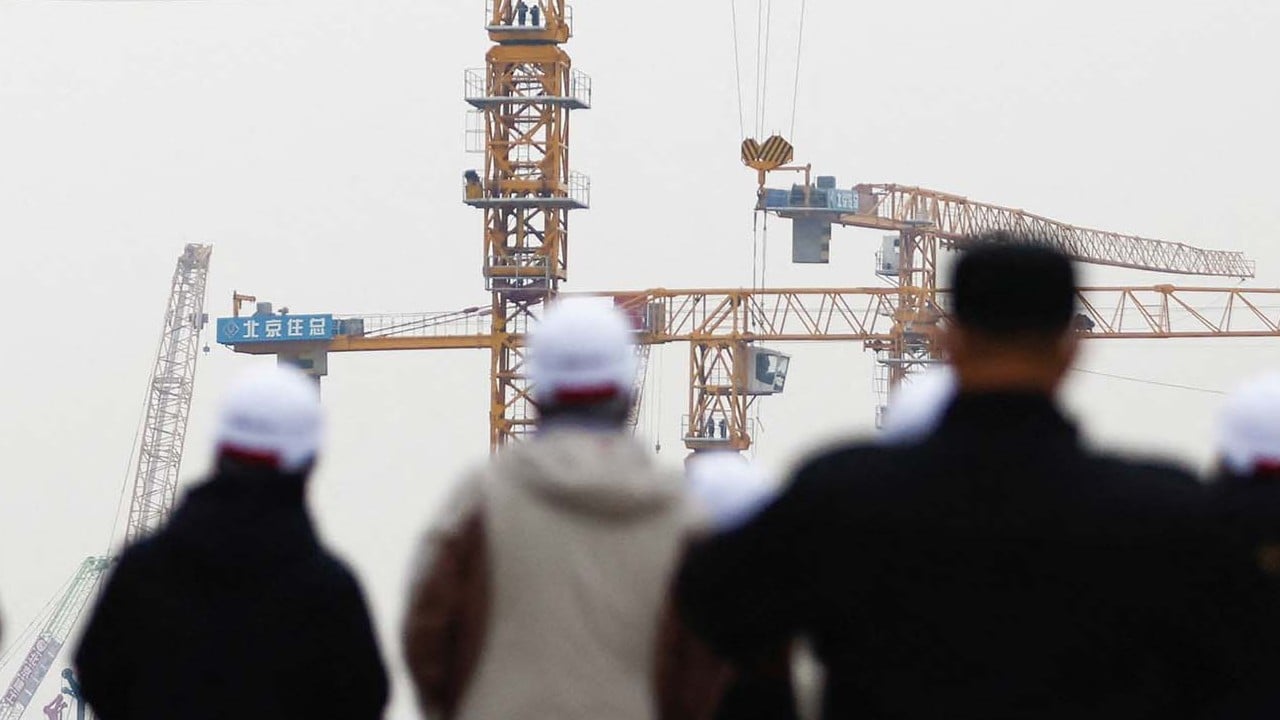
02:24
China records second-lowest economic growth figure in almost 50 years after Covid-ravaged 2022
China GDP: ‘double-dip’ saw US economic gap widen last year after second-lowest growth since 1976
- China’s economy grew by 2.9 per cent in the fourth quarter of last year, meaning gross domestic product for 2022 grew by 3 per cent to 121 trillion yuan (US$18 trillion)
- Goldman Sachs said in December that China could overtake the US as the world’s largest economy by around 2035, although the gap likely widened last year
Beijing’s hardline zero-Covid strategy likely led to the economic gap with the United States widening last year after China’s economy grew at its second slowest pace in 46 years, according to analysts.
The double-dip last year led to a bigger economic gap with the US, rather than narrowing
“The double-dip last year led to a bigger economic gap with the US, rather than narrowing,” said Qiu Xiaohua, former head of the National Bureau of Statistics (NBS), after China’s economy grew by 6 per cent in 2019 and recovered from the 2020 decline by expanding by 8.4 per cent in 2021.
“From the perspective of international comparison, we need to have a stronger sense of urgency. We must see a variety of pressures faced by China.”
Qiu said that Chinese economic growth last year lost 2 percentage points due to the coronavirus.
Authorities, though, still need to convince businesses and households that China can combat the lingering threat of waves of coronavirus infections, while also lifting market confidence, finding new growth drivers amid a demographic and debt crisis, and minimising the cost of Washington’s mounting containment endeavours, analysts warned.
The US has yet to release its annual figures, but after it recorded annualised GDP growth of 3.2 per cent in the third quarter, it is largely expected that the bilateral nominal GDP gap with China will grow for the first time in three years.
Technical issues, including the average exchange rate used for the comparison, still exists, but Qiu believes that the nominal GDP gap expanded by around US$1 trillion last year.
The Beijing-based think tank, the Chongyang Institute for Financial Studies, attributed the anticipated widening gap to extraordinary US dollar strengthening and the 40-year-high inflation in the US last year, calling it a “temporary phenomenon” that will be reversed this year.
The yuan, if calculated using the government reference rate, depreciated by around 9.2 per cent against the US dollar last year.
“Ensuring the overtaking in 10 years or so is an important tool to tackle domestic risks. Otherwise, the risks may get bigger,” the institute’s executive dean, Wang Wen, said.
China will first surpass the US to become the world’s top consumption market no later than next year, if its currency appreciates from the current level, he added.
The institute projects that China’s economy will return to its growth track of 5.5-6 per cent over the next three years before growing 5-5.5 per cent annually from 2026-30.
China’s share of global GDP will also increase to 22.2 per cent in 2030 from last year’s 18.5 per cent, which would see the US lose its place as the world’s largest economy, the institute predicts.
The Japan Centre for Economic Research, though, said last month that China’s nominal GDP is unlikely to surpass the US in the next few decades due to Beijing’s strict adherence to its zero-Covid policy last year and other related headwinds.
The broad story for China’s economy in 2023 will be that of recovery
This was highlighted as retail sales fell by 1.8 per cent last month compared with a year earlier, up from a fall of 5.9 per cent in November. Overall in 2022, retail sales fell by 0.2 per cent.
Property investment also declined by 10 per cent last year, with sales value plunging by 26.7 per cent, and the NBS conceded on Tuesday that “the foundation of domestic economic recovery is not solid as the international situation is still complicated and severe”.
China is widely expected to set a 2023 economic growth target of above 5 per cent after four of its top five economic powerhouses – Guangdong, Jiangsu, Shandong and Zhejiang – set goals of “above 5 per cent”.
“The broad story for China’s economy in 2023 will be that of recovery,” said Nick Marro, a lead analyst for global trade at The Economist Intelligence Unit.
A consumption rebound in China will be more noticeable starting from the second quarter, Marro added, although it may take some time for a sustained recovery to rebuild after the initial wave of “revenge consumption” subsides.
China’s projected economic acceleration will be mild due to its demographic challenges, as well as its zero-Covid policy exit, a property downturn and geopolitical tensions, Brookings Institution senior fellow David Dollar said last week.
Lily McElwee, a fellow at the Centre for Strategic and International Studies, warned that the external environment will be characterised by intensified US-China tensions, including US technological-containment policies.
“[It] is going to provide a damper, particularly in the second half of the year, on China’s economic growth and also going forward into 2024 and 2025,” she said.

